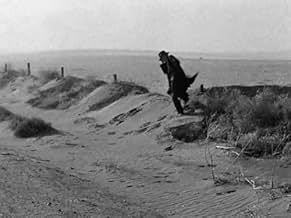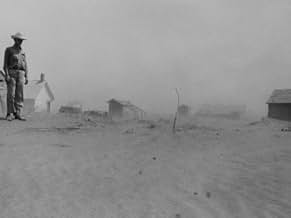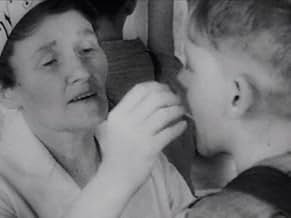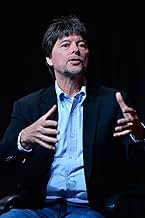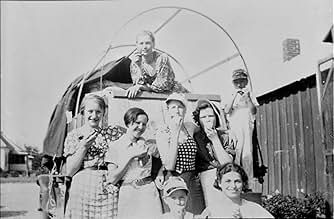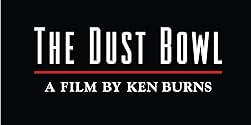NOTE IMDb
8,2/10
2,3 k
MA NOTE
Documentaire sur la sécheresse des prairies américaines dans les années 1930 et ses conséquences pendant la Grande Dépression.Documentaire sur la sécheresse des prairies américaines dans les années 1930 et ses conséquences pendant la Grande Dépression.Documentaire sur la sécheresse des prairies américaines dans les années 1930 et ses conséquences pendant la Grande Dépression.
- Nommé pour 2 Primetime Emmys
- 2 victoires et 5 nominations au total
Parcourir les épisodes
Avis à la une
This is a decent documentary and if you don't know much about the dust bowl then it will give you a good overview. I was a bit disappointed to find that part 1 was very similar to a television documentary called: 'The American Experience - Surviving the Dust Bowl' and featured much of the same footage and photographs and talking heads. I guess this mini series is four times longer overall so it's a better option if you want a more in depth look at this very sad time in recent north American history. I have to say that I find the music in the background is a bit distracting and often had to rewind bits that I didn't catch because my mind had wandered with the music.
All Americans have heard of the Dust Bowl and know it was a phenomenon associated with drought in the 1930s, and that Okies left for California, a la The Grapes of Wrath. We have also heard about the more recent droughts in the West. So the thought arises, could it happen again? But that's about it. Most non-Americans don't even know that.
With some of his documentaries on more distant subjects, Ken Burns relied on old photographs and narratives read by actors. But The Dust Bowl is the story told by the people who saw the massive dust storms, day after day, with their own eyes, breathing the dust, eating the dust, getting lost in the dust. They are often the very people in the pictures used. At at the end, we see a dedication listing the participants who had died before the documentary was released. Burns was just in time to save this bit of oral history.
What struck me initially was how objective, unemotional, and even dry was his approach, far less spirited than subjects like the Statue of Liberty, Baseball or Jazz. And the pace is leisurely, a lot of time spent looking at a lot of towering dust clouds and hearing account after account of being engulfed by dust and sand. Most film makers would have sped things up for the MTV generation, perhaps added booming sound effects and gimmicky zips and flashes to keep our attention. But this is Ken Burns, and he has the street cred to do things his way. And it was the right way. People actually lived through these dust and sand storms for years, so surely we can endure the accounts for a few hours to get a feel for it.
But this tells a larger story, of how the region was settled, telling another side of the Oklahoma land rush that I had never heard, and how government policies and World War I led to foolish overproduction of wheat on land better suited to grazing. Yes, foolish. The people involved say so, themselves, for the most part. This is not Ken Burns political propagandist, as some reviewers allege.
What struck me is how objective this account is, how balanced, presenting various sides, and grounded in fact, like good journalism. The film covers the New Deal policies of FDR to try to save the land and help those living in the Dust Bowl; it also provides insight into the origins of farm price support policies. Is this what causes some viewers to froth at the mouth? I kept waiting for the judgment, the observation that global warming could cause more dust bowls, in America, and around the world. But it never came. Perhaps he could anticipate the response. Frankly, he didn't need to spell out the connection.
With better, scientific farming practices, the Dust Bowl land could be saved, more or less. You still need rainfall, unless you are willing to drain aquifers. But the story of the Dust Bowl also offers some promise that there may be intelligent ways to adjust to the effects of climate change on agriculture. Discussion of this is the part that I wish was included.
This is a vitally important story that needs to be remembered, with lessons for our and future generations. It is also a story of the human spirit, of people who endured hardship far longer than any of us should, or probably could, bear. I am glad they got a chance to share their story with us.
-- Footnote:
A good supplementary program is The Civilian Conservation Corps episode of The American Experience, #22.1, for a larger context on the environmental and economic situation.
With some of his documentaries on more distant subjects, Ken Burns relied on old photographs and narratives read by actors. But The Dust Bowl is the story told by the people who saw the massive dust storms, day after day, with their own eyes, breathing the dust, eating the dust, getting lost in the dust. They are often the very people in the pictures used. At at the end, we see a dedication listing the participants who had died before the documentary was released. Burns was just in time to save this bit of oral history.
What struck me initially was how objective, unemotional, and even dry was his approach, far less spirited than subjects like the Statue of Liberty, Baseball or Jazz. And the pace is leisurely, a lot of time spent looking at a lot of towering dust clouds and hearing account after account of being engulfed by dust and sand. Most film makers would have sped things up for the MTV generation, perhaps added booming sound effects and gimmicky zips and flashes to keep our attention. But this is Ken Burns, and he has the street cred to do things his way. And it was the right way. People actually lived through these dust and sand storms for years, so surely we can endure the accounts for a few hours to get a feel for it.
But this tells a larger story, of how the region was settled, telling another side of the Oklahoma land rush that I had never heard, and how government policies and World War I led to foolish overproduction of wheat on land better suited to grazing. Yes, foolish. The people involved say so, themselves, for the most part. This is not Ken Burns political propagandist, as some reviewers allege.
What struck me is how objective this account is, how balanced, presenting various sides, and grounded in fact, like good journalism. The film covers the New Deal policies of FDR to try to save the land and help those living in the Dust Bowl; it also provides insight into the origins of farm price support policies. Is this what causes some viewers to froth at the mouth? I kept waiting for the judgment, the observation that global warming could cause more dust bowls, in America, and around the world. But it never came. Perhaps he could anticipate the response. Frankly, he didn't need to spell out the connection.
With better, scientific farming practices, the Dust Bowl land could be saved, more or less. You still need rainfall, unless you are willing to drain aquifers. But the story of the Dust Bowl also offers some promise that there may be intelligent ways to adjust to the effects of climate change on agriculture. Discussion of this is the part that I wish was included.
This is a vitally important story that needs to be remembered, with lessons for our and future generations. It is also a story of the human spirit, of people who endured hardship far longer than any of us should, or probably could, bear. I am glad they got a chance to share their story with us.
-- Footnote:
A good supplementary program is The Civilian Conservation Corps episode of The American Experience, #22.1, for a larger context on the environmental and economic situation.
Oh, yes! - Man and his machines - And would you just look at what thou hast done in the name of progress and agriculture!..... Yes. Thou hast created a state-wide "dust bowl" like never imagined possible.
It sure would've been nice and convenient if man could've guiltlessly shifted the blame for this devastating disaster onto the shoulders of good, old Mother Nature (saying that she was clearly having a very bad hair day that particular decade).... But, no way, Jose. In this case, man couldn't worm his way out of this mess-of-historical-proportions that easy.
Anyways - Even though "The Dust Bowl" was definitely somewhat over-long with its 240-minute running time, it was still quite an interesting documentary that I'm sure many viewers are going to find quite intriguing to watch.
Through vintage, newsreel footage, 100s of stills, and interviews with, not only historians, but with the very people who were actually present to witness this incredible phenomenon, the viewer soon learns just how this man-made disaster of endless dust storms affected the lives of thousands of American citizens during the Depression Years of the 1930s.
Directed by Ken Burns (for PBS), and narrated by Peter Coyote, The Dust Bowl is a fascinating step back in time to an awesome occurrence that we can only hope will never have a chance, ever again, to repeat itself.
It sure would've been nice and convenient if man could've guiltlessly shifted the blame for this devastating disaster onto the shoulders of good, old Mother Nature (saying that she was clearly having a very bad hair day that particular decade).... But, no way, Jose. In this case, man couldn't worm his way out of this mess-of-historical-proportions that easy.
Anyways - Even though "The Dust Bowl" was definitely somewhat over-long with its 240-minute running time, it was still quite an interesting documentary that I'm sure many viewers are going to find quite intriguing to watch.
Through vintage, newsreel footage, 100s of stills, and interviews with, not only historians, but with the very people who were actually present to witness this incredible phenomenon, the viewer soon learns just how this man-made disaster of endless dust storms affected the lives of thousands of American citizens during the Depression Years of the 1930s.
Directed by Ken Burns (for PBS), and narrated by Peter Coyote, The Dust Bowl is a fascinating step back in time to an awesome occurrence that we can only hope will never have a chance, ever again, to repeat itself.
Amazing information...and the interviews you assembled were fantastic. I had heard of this but was completely ignorant as to just how significant it was.
The stories told by the interviewees were both extremely sad and inspiring. I can't believe that families never left. The one fact that still sticks out is that during one dust storm, an extremely bad one, dirt from the Midwest ended up out on the deck of a ship in the Atlantic and in the White House amazing
And thank God you interviewed those people when you did. We need to be taking advantage of our elders and their experiences the way this documentary did.
The stories told by the interviewees were both extremely sad and inspiring. I can't believe that families never left. The one fact that still sticks out is that during one dust storm, an extremely bad one, dirt from the Midwest ended up out on the deck of a ship in the Atlantic and in the White House amazing
And thank God you interviewed those people when you did. We need to be taking advantage of our elders and their experiences the way this documentary did.
As an immigrant I was not familiar with this episode in American history besides a few facts connected to Great Depression and migration of thousands to California so well described by John Steinbeck. This movie however showed me that it may not be only about economic woes of that era but other factors played significant role such as greed, cheating of poor farmers by unscrupulous developers in a sort of Alaskan scheme,disregard for needs of a land (notice that historians point to the fact of that area used incorrectly for wheat instead just for grazing), over extensive farming resulting in erosion and general lack of paying attention to climate. All this unfortunately reminds me of our times which makes this movie especially troubling. What saved us completely from total gloom after watching are people: beautiful farmers undefeated in the face of such calamity. I just wish that those types of Americans would be shown more often to the rest of the world and maybe they will be more liked by others. Instead what the world see are shallow celebrities, rich and arrogant businessmen. Show the world more that woman in the beaten truck with her hungry children in that famous photograph made on the way to California and she should be real American lady not Modonna or similar types. Now, on another note: what struck me about the movie is how well our heroes looked despite poverty, lack of food, dust and proper medical care. I even cracked a joke to my family that they all looked as they had just left Gap store. Compare them with contemporary society and see difference. Obesity, bulky faces, sloppy clothes, lack of grace, a hint of stupidity on our faces coming from constant looking at commercial surroundings and see how those old farmers looked dignified compared to us. They ate less but purer food, were surrounded by nature and beauty (with the exception of those 10 years of dust bowl), had deep connection to others, walked constantly... - perhaps these things made them prettier. So if there are messages coming from this movie there are following: treat nature with respect, plan for the future, save water; and in other realm: dress better, walk more and with poise and clean your house. If they could do it despite all the odds, so can we.
Le saviez-vous
- AnecdotesExtracts from the interviews in this documentary were used by Christopher Nolan in Interstellar (2014) when depicting the dust storms on Earth.
- ConnexionsFeatured in Interstellar (2014)
- Bandes originalesThe Plainsman
Written by John Owen Lardinois
Performed by Fiddlin' Johnny
From Cowboy Legacy
© 1997 Makoché Music
Meilleurs choix
Connectez-vous pour évaluer et suivre la liste de favoris afin de recevoir des recommandations personnalisées
- How many seasons does The Dust Bowl have?Alimenté par Alexa
Détails
- Date de sortie
- Pays d’origine
- Site officiel
- Langue
- Aussi connu sous le nom de
- Dust Bowl - Die Jahrhundertdürre
- Sociétés de production
- Voir plus de crédits d'entreprise sur IMDbPro
- Durée46 minutes
- Couleur
Contribuer à cette page
Suggérer une modification ou ajouter du contenu manquant

Lacune principale
By what name was The Dust Bowl (2012) officially released in India in English?
Répondre
